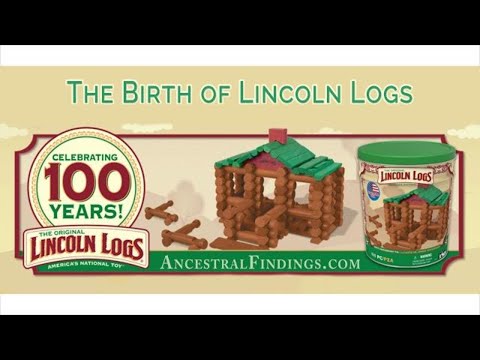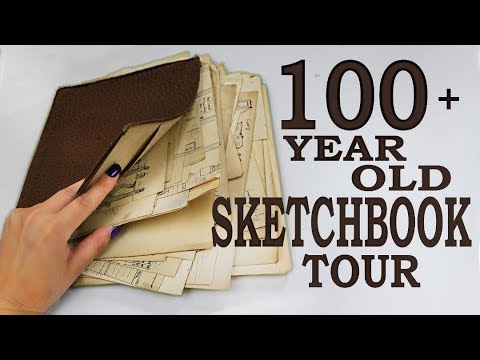Lincoln Logs (Invented 1916-17) I think it’s fair to say that everyone, at one time or another, has owned that giant cardboard tube full of timber. Lincoln Logs are likely a staple for early childhood development as they teach youngsters how to build, how to use eye-hand coordination, and how to fashion weapons out of notched wood. Good times. Watch this video on YouTube
Slinky (1943)
Richard James, a Philadelphia native was evidently bored one day at the fabrication plant he worked in and noticed that the coiled cut-off from certain machines looked like something that could be a lot of fun. Or else possible slice someone’s hands to ribbons. Well, the rest is history as the fellow took a load home and watched it wriggle down the stairs. Smart guy. 8. Building Blocks (1798)
Maria and R.L. Edgeworth’s Practical Education manual – according to Wikipedia – is the first formal mention of the use of toy and building blocks for children. Since then it has become apparent that this toy, perhaps directly responsible for kids wanting to be architects and even demolition experts, shows children how to create constructs with patience and skill. And the corners hurt, too. Be careful! In the video the part about how useful blocks are for development is at the end. 7. Artist Supplies (1903) I cited the date for Crayons in the header since it seems that Binney and Smith jumped on the colorful bandwagon quite a bit before markers or other media found its way into the mainstream. Oh sure, cave drawings have been around for a bit of time, and I guess that counts, but I’m pretty sure children weren’t involved in drawing naked cavemen hunting bison. At least I hope not.
- Sports Equipment
According to the ever-knowledgeable Wikipedia, the first use of the word ball was in 1205! Wow, it’s come such a long way since then to mean lots of other, ahem, unfortunate things. Anyway, children playing with any number of sports item is typical of everyone and what kid doesn’t like waking up on Christmas morning with a new baseball set under the tree! Then he can go to work smashing stuff with the bat. Good boy!
- Toy Guns
Toy guns in any form have been around for as long as I can remember, and, apparently as long as anyone else as well since I couldn’t find a date specifying when they were first mass-produced. Oh well, we’ve all used them at one time; shooting away at our siblings and friends. Now, though, the popularity of AirSoft guns and Paintball Guns have really cornered the market. Keep on shooting, it can’t possibly do any long-term damage, right?
- Play-Doh (1956)
Invented by Noah and Joseph McVicker, the non-toxic colorful compound allows children to create absolutely anything their little minds can concoct. And to help those children out who have little imagination, why not purchase any number of useful pieces of equipment including barber shops, restaurants, molding stations, and farm animal limbs. Play-Doh is brilliant and can be made at home, just don’t use food coloring like I did. Stains galore! 3. Lego (1934)
Ole Kirk Christiansen from Denmark took the basic idea of building blocks and made them a million times cooler. Meaning, “play well”, LEGO has gone from its humble, simple beginnings to a monster of a toy acquiring such licenses as Harry Potter, Star Wars, and NASA! Not just square pegs by any means, the variety of shapes and sizes available now can allow you to build nearly anything! Oh, and a video game based on the Star Wars sets is far too much fun.
- Action Figures/Dolls (2000 BC)
Ok, so that’s a bit of a stretch on the date, but apparently ancient tombs have been discovered featuring bits of human-shaped rags made to look like the person buried within. Creepy. Anyway, the mass production of dolls and dolls for boys (later action figures) began in the USA somewhere in the 1860’s when kids got bored of staring at ‘the plains’ for hours on end.
- Video Games (1947) I don’t normally do this, but what follows is the exact text from Wikipedia on the invention of the video game. There was so darn much to use in this little blurb that I decided to use it all. So blame them if it’s wrong. The early formulative years consist of basic games that made use of interactive electronic devices with various display formats. The earliest example was in 1948, where the idea for a “Cathod Ray Tube Amusement Device” was conceived by Thomas T. Goldsmith Jr. and Estle Ray Mann. The two filed for a patent on January 25, 1947, which was issued on December 14, 1948 as US Patent 2455992. Inspired by radar displays, it consisted of an analog device that allowed a user to control a vector drawn dot on the screen to simulate a missile being fired at targets represented by drawings fixed to the screen. Other examples included the NIMROD computer at the 1951 Festival of Britain, Alexander S. Douglas’s OXO for the EDSAC in 1952, William Higinbotham’s interactive game called Tennis for Two in 1958, and MIT students Martin Graetz, Steve Russell, and Wayne Wiitanen’s Spacewar! on a DEC PDP-1 computer in 1961. Each game used different means of displaying the game: NIMROD used a panel of lights to play the game of Nim, OXO used a graphical display to play Tic-tac-toe, Tennis for Two used an oscilloscope to display a side view of a tennis court, and Spacewar! used the DEC PDP-1’s vector display to have two spaceships battle each other. In 1971, Computer Space was released and was the first commercially sold, coin-operated video game. Created by Nolan Bushnell and Ted Dabney, it used a standard television and game generated video signal for display. It was followed in 1972 by the Magnavox Odyssey, the very first home console. Modeled after Ralph H. Baer’s late 60’s Brown Box, it also used a standard television and game generated video signal. These system were followed by two versions of Atari’s Pong; an arcade version in 1972 and a home version in 1975. The commercial success of the arcade and home consoles versions of Pong spawned numerous Pong-clones and caused other companies to develop their own systems, spawning the video game industry. Now you know who to blame. Notable Omissions: Meccano Contributor: StewWriter

















